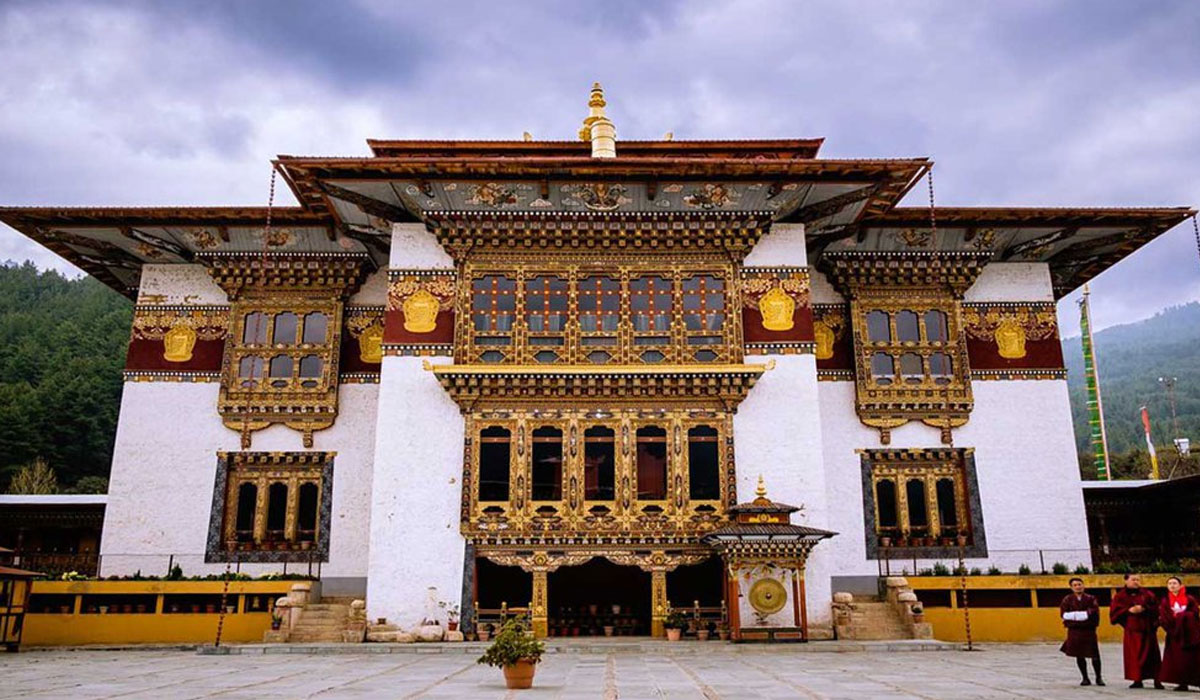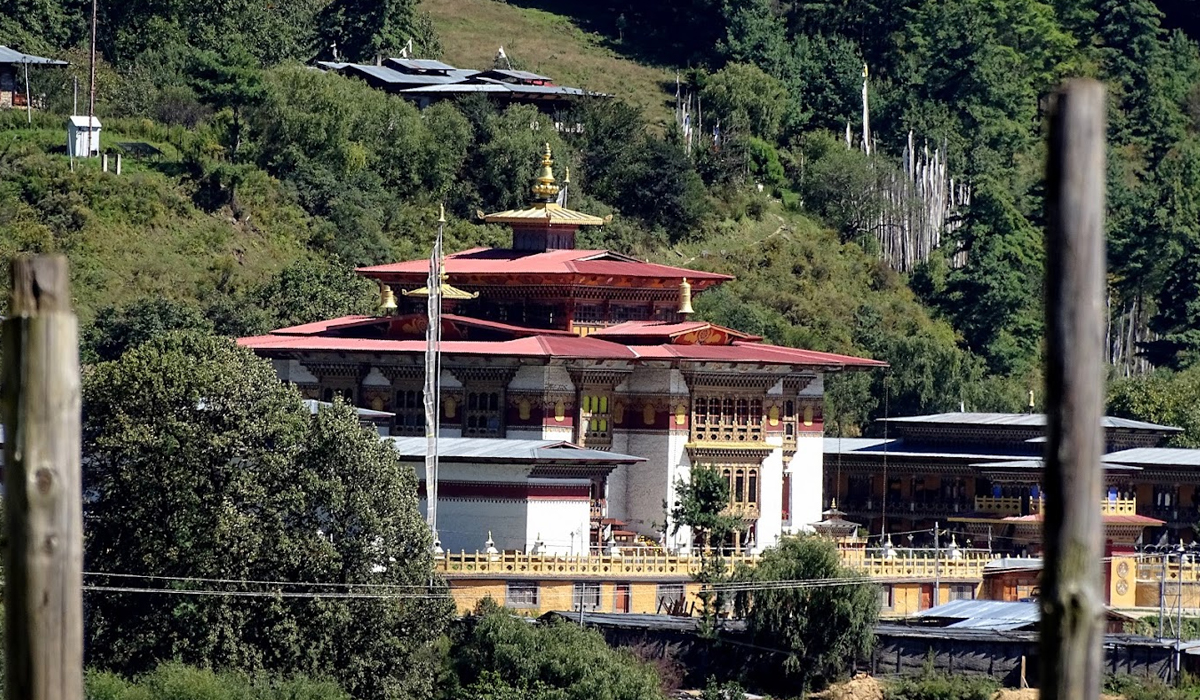


Konchogsum Lhakhang: The Temple of the Three Jewels
Konchogsum Lhakhang, located in the serene Chokhor Valley of Bumthang, Bhutan, is a historical and spiritual landmark revered for its sacred relics, ancient artifacts, and profound connection to Bhutanese Buddhism. This centuries-old temple is a testament to the enduring faith and cultural heritage of the Bhutanese people.
Historical Background
Konchogsum Lhakhang, meaning “Temple of the Three Jewels” (Buddha, Dharma, and Sangha), is believed to have been established in the 8th century during the visit of Guru Rinpoche (Padmasambhava). The temple played a key role in spreading Buddhism in the region and was a center of spiritual learning and practice.
While the exact date of its construction remains uncertain, Konchogsum Lhakhang was later rebuilt in the 15th century after suffering damage from a fire. It has since been a focal point of devotion and pilgrimage for Buddhists.
Architectural Features
The temple’s architecture reflects the traditional Bhutanese style, with intricately carved woodwork, whitewashed walls, and brightly painted exteriors. Inside, Konchogsum Lhakhang houses ancient relics, sacred texts, and exquisite murals depicting Buddhist deities and teachings.
One of its most notable treasures is a massive bell, believed to date back to the 8th century. Legend has it that the sound of this bell once resonated so far that it alerted invaders, prompting them to seek out and plunder the temple. Despite the theft, the bell remains an iconic feature of the lhakhang.
Religious Significance
Konchogsum Lhakhang is a deeply spiritual site and holds immense significance for practitioners of Vajrayana Buddhism. It is associated with the blessings of Guru Rinpoche, who is said to have meditated and blessed the temple during his travels through Bhutan.
The temple’s name, Konchogsum, signifies the three jewels of Buddhism, underscoring its role as a sanctuary for spiritual refuge, teaching, and practice.
Festivals and Rituals
The temple is the site of various religious ceremonies and rituals, with the annual Konchogsum Tshechu being a highlight. During this festival, monks and laypeople gather to perform sacred dances, offer prayers, and celebrate the teachings of the Buddha. The event draws both locals and visitors, fostering a sense of community and devotion.
Access and Experience
Konchogsum Lhakhang is easily accessible from Jakar, the main town in Bumthang, and offers a tranquil retreat for those seeking peace and spiritual solace. Surrounded by lush green fields and traditional Bhutanese homes, the temple’s serene setting enhances its sacred atmosphere.
Preservation and Legacy
Despite its age, Konchogsum Lhakhang has been well-maintained, with periodic restorations ensuring its survival as a cultural and spiritual treasure. It stands as a symbol of Bhutan’s rich religious history and the resilience of its people in preserving their heritage.
Bumthang - Places to visit

It is known for its ancient frescoes and murals that depict the life and teachings of Buddha, as well as the famous Jataka tales.

The temple houses several important relics, including the sacred chain mall of Terton Pema Lingpa.

It is also known for its collection of ancient Buddhist scriptures and manuscripts, many of which are written on handmade paper and are several centuries old.

Kurjey Lhakhang is a sacred monastery in Bumthang, known for its spiritual significance and beautiful architecture, attracting pilgrims annually.

Jambey Lhakhang, one of Bhutan’s oldest monasteries, is renowned for its historical significance and vibrant annual Tshechu festival.

Mebar Tsho, the “Burning Lake,” is a sacred site in Bumthang, known for its spiritual significance and stunning scenery.

It is famous for its textiles, particularly the locally woven woolen fabrics called “Ura Shing” and “Ura Rachu.”

It has a large prayer wheel, a collection of ancient Buddhist scriptures, and a sacred prayer flagpole.

It is one of the six main Nyingma monasteries in Bhutan and is considered to be one of the most important monasteries.

The monastery has a unique architectural style with intricate wood carvings and paintings that depict life and teachings.

It was established in 2007 by Swiss brewer Fritz Maurer, who had a vision of bringing high-quality beer to Bhutan.
